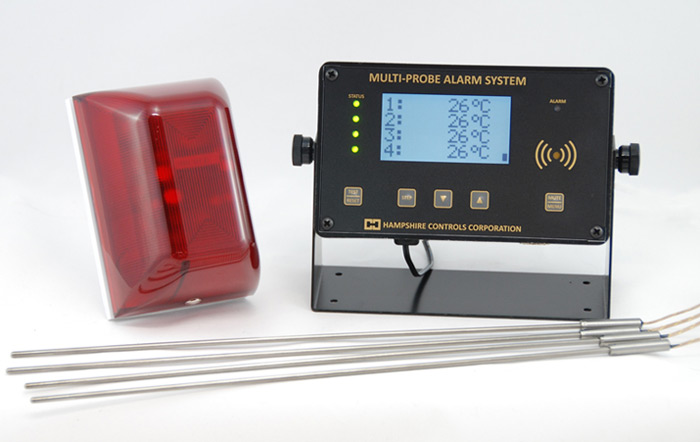
Customized MPS Series Monitoring System.
Customization of Standard Monitoring/Alarm
Systems
Hampshire Controls has worked with OEMs,
government agencies, research laboratories, and industrial
manufacturers in a variety of industries to customize our
products to address a wide range of monitoring, alarm
notification, and network logging applications.
Our customized systems are designed and
manufactured in house to meet the specific demands of the
application without compromise.
Monitoring, alarm notification, and network
logging customizations could include:
- Specialized analog and digital sensors (e.g., temperature
sensors (-200 °C - +400 °C), resistive, voltage, current,
I2C, SPI, etc.).
- Application-specific firmware.
- Wired and wireless networked sensors (RF, Wi-Fi, Cellular
LTE, etc.).
- Integration into networked data logging and alarm systems
(Ethernet, Wi-Fi).
- Digital, analog, and relay outputs for process monitoring
and control.
- Integration with audio and visual signaling devices
(horns, strobes, etc.).
- Variable display types and sizes.
- Custom panel sizes and colors with OEM artwork.
- Custom NEMA/IP rated enclosures for harsh environments.
Fully Custom Design and Manufacturing Services
Hampshire Controls will design and manufacture
new monitoring and/or control systems for your OEM, laboratory,
or manufacturing application.
Product development services include:
Mechanical Engineering:
- Customized enclosures to satisfy environmental
requirements (NEMA/IP ratings, etc.).
- Overlay or panel designs including graphic layout with
customized logo.
Electrical Engineering:
- Analog, digital, and mixed-signal PCB design.
- Optimized microcontroller selection to minimize the number
of additional IC components.
- Sensor data acquisition, amplification, and filtering.
- Power supply design for line power, battery, or
mixed-power applications.
- Low power designs for battery powered devices.
Programming:
- In-house application-specific firmware development.
- Industry standard or proprietary communications protocols.
Manufacturing:
- Electronic assembly: PCB soldering, cable manufacturing,
subsystem interfacing, etc.
- Final electronic product assembly.
- Electronic testing, burn-in, and calibration.